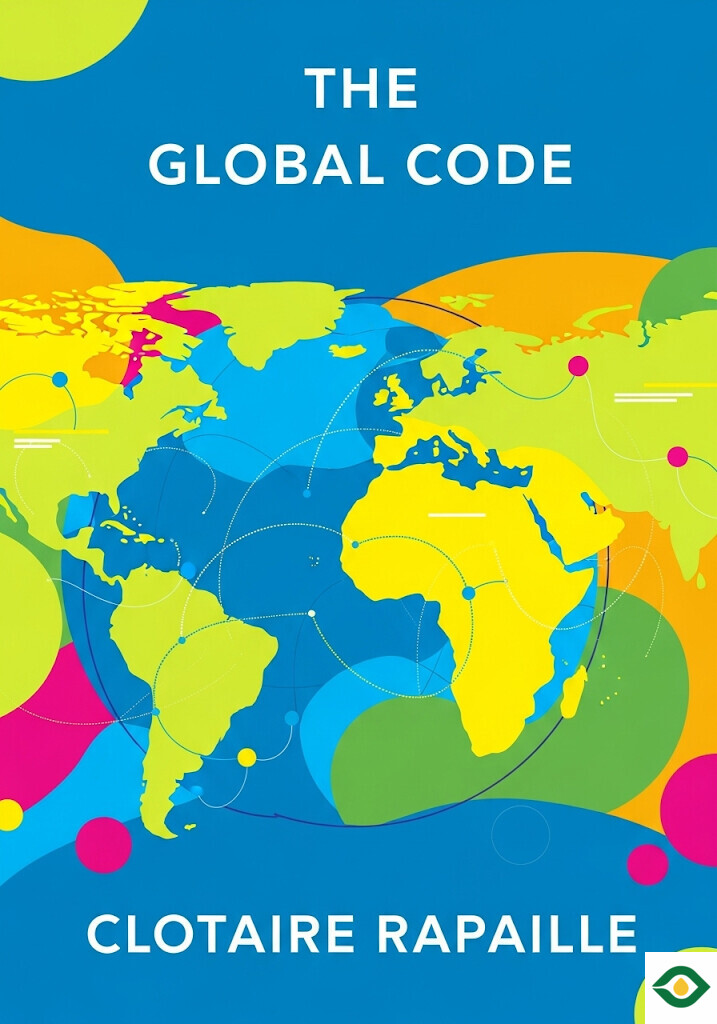Description
In today’s world, borders feel smaller than ever before. Planes take us across continents in hours, phones connect us instantly, and cultures mix in ways that were unthinkable only decades ago. Out of this interconnected life, a new kind of “tribe” has been born. This isn’t a tribe tied to one nation, tradition, or language. It is a global tribe, made up of people whose influence reaches across cultures and whose choices quietly shape how the rest of the world lives, dreams, and consumes. Their way of thinking has created something larger than themselves — a shared set of ideas and values known as the Global Code.
The Global Code is like an invisible guide that influences the way people see success, luxury, and belonging. It doesn’t replace local traditions, but it exists above them, linking people who share the same dreams of progress, status, and style. Everyone still keeps their unique customs, but under the surface, many now live by this global rhythm. For example, people everywhere dream of finding a good home, a promising career, and a safe environment for their children. That common desire builds the foundation of the Global Code.
At the heart of this tribe sits a hierarchy that feels almost royal. At the very top is the “court” — the ultra-visible faces of money, fame, and success. They are the true tastemakers, the people whose choices ripple through cultures everywhere. If they decide a certain piece of clothing, a gadget, or a social network is worth using, millions follow. Names like Bill Gates or Mark Zuckerberg are obvious examples. Their wealth and visibility make them symbols of what is possible, and their preferences often become the world’s trends.
Just below them are the courtesans, people who circle close to the court in search of recognition. They attend the same schools, appear at the same glamorous events, and try to mimic the lifestyle of the top tier. Their lives are fueled by ambition, always reaching upward.
Next are the suppliers — the creators of luxury goods and services that feed the desires of the top group. High-end brands like Rolex, Chanel, or Rolls-Royce thrive because they offer products that court members value. These brands understand the rules of the Global Code and design experiences that feel rare, handmade, and exclusive.
But influence does not only flow from money. The fourth layer belongs to symbolic creators. These are artists, designers, and thinkers who shape culture with ideas and aesthetics. They give the Global Tribe its language of style, beauty, and philosophy. Figures like Coco Chanel or Oscar Niemeyer changed the way the world dresses and builds, leaving behind symbols of elegance that still resonate.
Beneath them live the third-culture individuals. These are children who grow up between worlds, shaped by parents from different backgrounds or lives spent moving across countries. They are bridges between cultures, often multilingual and adaptable. Their identity is not tied to one place, but to many. This constant movement makes them more tolerant, open, and skilled at seeing connections others may miss.
And finally, on the outer edges, stand the aspirants. They are the ones who want to enter the tribe but hesitate, unsure of the rules. They may have wealth and desire, but they lack the confidence or knowledge of how to behave in this carefully coded world. They study, copy, and practice until one day they may be accepted.
Membership in the Global Tribe requires more than money or status. There is also a rule of three. A true member has three homes, or at least three countries they have lived in. They can speak at least three languages and are familiar with at least three cultures. This rule builds a global identity — not tied to one nation but stretched across many. Such people don’t just travel, they belong in several places at once, moving with ease through airports, embassies, and global hubs.
Cities like Hong Kong, Dubai, Singapore, or Monaco serve as gathering points. They are business-friendly, filled with international flights, and positioned as crossroads of trade and influence. Members of the tribe often settle in these hubs, or at least pass through them frequently.
Luxury, for the Global Tribe, carries a meaning beyond price. Expensive does not equal valuable unless it also feels unique. In a world overflowing with mass production, handmade and tailor-made goods carry a deeper weight. A bespoke suit, a watch crafted by hand, or an artwork shaped with patience and passion becomes the true standard of luxury. “Handmade” is no longer simply old-fashioned; it is the new badge of ultimate taste.
This belief sets trends that spread quickly. Social media gives the world instant access to what the court wears, eats, and buys. Millions copy the tribe’s signals of taste, dreaming of living the same lifestyle. The tribe may be small in number, but their power extends worldwide because others aspire to be like them.
Companies know this and build their brands to appeal to the Global Code. Successful global brands speak directly to the desires of the tribe: freedom, exclusivity, and belonging to something greater. Jeep’s campaign about creating your own road tapped into the desire for independence. American Express designed airport services that gave travelers speed and comfort, knowing the tribe values efficiency and special treatment. Scotch brand Laphroaig made its buyers feel special by letting them “own” a tiny piece of Scottish land. All these moves turned ordinary products into cultural symbols.
The key to success is not simply selling an object, but selling a feeling that aligns with the Global Code. That feeling can be independence, connection, or belonging to an elite circle. Brands that capture it rise above others and stay in demand.
The Global Code, then, is not just about luxury goods. It is about the shared values of a connected world: mobility, uniqueness, status, and influence. It reflects how people across nations increasingly look up to the same figures, dream of the same comforts, and follow the same signals of success.
For anyone outside the tribe, this code can still be useful. It is a guide to understanding what inspires people in different cultures and how to communicate across boundaries. Whether in business or personal life, speaking “culture” matters. Learning the customs of others, respecting their ways, and adapting to their expectations can open doors that money alone cannot.
The message is clear: our world is shaped not only by nations or traditions, but by a fluid, global tribe. Their code defines what is luxurious, stylish, and desirable. Their choices ripple outward, influencing billions of lives. To understand the Global Code is to understand how culture, business, and desire move together in today’s interconnected world.





